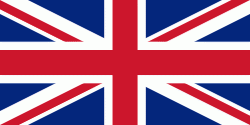Glasgow Prestwick Airport (Prestwick Airport)
Glasgow Prestwick Airport, commonly referred to as Prestwick Airport, is an international airport serving the west of Scotland, situated 1 nmi northeast of the town of Prestwick in South Ayrshire and 32 mi southwest of Glasgow. It is the less busy of the two airports serving the western part of Scotland's Central Belt, after Glasgow Int’l Airport in Renfrewshire, within the Greater Glasgow conurbation. The airport serves the urban cluster surrounding Ayr, including: Kilmarnock, Irvine, Ardrossan, Troon, Saltcoats, Stevenston, Kilwinning, and Prestwick itself.
Glasgow Prestwick is Scotland's fifth-busiest airport in terms of passenger traffic, although it is the largest in terms of land area. Passenger traffic peaked at 2.4 million in 2007 following a decade of rapid growth, driven in part by the boom in low-cost carriers, particularly Ryanair, which uses the airport as an operating base. In recent years, passenger traffic has declined; around 670,000 passengers passed through the airport in 2016.
There has been much public debate and speculation over the association of the airport with Glasgow due to the fact Prestwick and Glasgow are considerably far apart. Calls have been made for the airport to be renamed Robert Burns International Airport, however, this was ruled out by the Scottish Government in 2014.
Passenger facilities were added in 1938. These were used until further investment made Prestwick compatible with jet transportation. The October 1946 USAAF diagram shows a 6600 ft runway 14/32, with a 4500 ft runway 8/26 crossing just west of its midpoint. In 1958, runway 13/31 was 7000 ft long; in May 1960, the runway's extension to 9800 ft opened.
A parallel taxiway, link road and an all-new terminal building were opened by the Queen Mother in 1964. The extension of Runway 13/31 caused considerable disruption to road users, for the main road from Monkton into Prestwick now crossed the tarmac of the runway. This was controlled by a "level crossing" system until a new perimeter road was completed.
Glasgow Prestwick is Scotland's fifth-busiest airport in terms of passenger traffic, although it is the largest in terms of land area. Passenger traffic peaked at 2.4 million in 2007 following a decade of rapid growth, driven in part by the boom in low-cost carriers, particularly Ryanair, which uses the airport as an operating base. In recent years, passenger traffic has declined; around 670,000 passengers passed through the airport in 2016.
There has been much public debate and speculation over the association of the airport with Glasgow due to the fact Prestwick and Glasgow are considerably far apart. Calls have been made for the airport to be renamed Robert Burns International Airport, however, this was ruled out by the Scottish Government in 2014.
Passenger facilities were added in 1938. These were used until further investment made Prestwick compatible with jet transportation. The October 1946 USAAF diagram shows a 6600 ft runway 14/32, with a 4500 ft runway 8/26 crossing just west of its midpoint. In 1958, runway 13/31 was 7000 ft long; in May 1960, the runway's extension to 9800 ft opened.
A parallel taxiway, link road and an all-new terminal building were opened by the Queen Mother in 1964. The extension of Runway 13/31 caused considerable disruption to road users, for the main road from Monkton into Prestwick now crossed the tarmac of the runway. This was controlled by a "level crossing" system until a new perimeter road was completed.
| IATA Code | PIK | ICAO Code | EGPK | FAA Code | |
|---|---|---|---|---|---|
| Telephone | 0871 223 0700 | Fax | 01292 511010 | ||
| Home page | Hyperlink |
Map - Glasgow Prestwick Airport (Prestwick Airport)
Map
Country - United_Kingdom
 |
 |
| Flag of the United Kingdom | |
The United Kingdom has evolved from a series of annexations, unions and separations of constituent countries over several hundred years. The Treaty of Union between the Kingdom of England (which included Wales, annexed in 1542) and the Kingdom of Scotland in 1707 formed the Kingdom of Great Britain. Its union in 1801 with the Kingdom of Ireland created the United Kingdom of Great Britain and Ireland. Most of Ireland seceded from the UK in 1922, leaving the present United Kingdom of Great Britain and Northern Ireland, which formally adopted that name in 1927. The nearby Isle of Man, Guernsey and Jersey are not part of the UK, being Crown Dependencies with the British Government responsible for defence and international representation. There are also 14 British Overseas Territories, the last remnants of the British Empire which, at its height in the 1920s, encompassed almost a quarter of the world's landmass and a third of the world's population, and was the largest empire in history. British influence can be observed in the language, culture and the legal and political systems of many of its former colonies.
Currency / Language
| ISO | Currency | Symbol | Significant figures |
|---|---|---|---|
| GBP | Pound sterling | £ | 2 |
| ISO | Language |
|---|---|
| EN | English language |
| GD | Gaelic language |
| CY | Welsh language |















